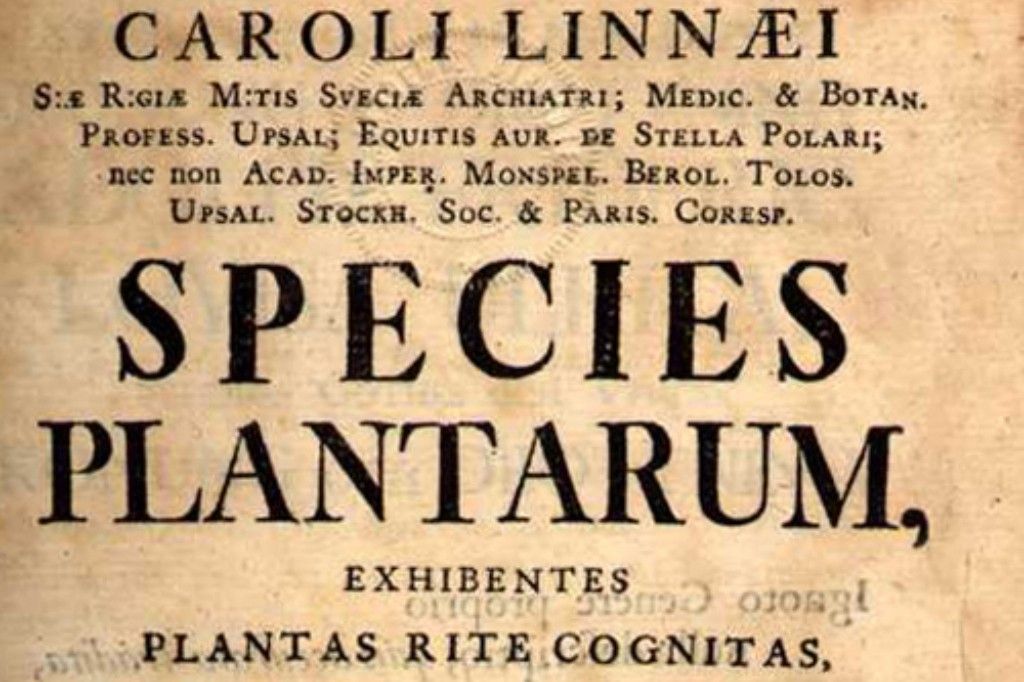
Detail from the title page of Species Plantarum, 1753, by Carl Linnaeus. (Public domain, Wikipedia)
Common names of plants vary greatly. Often in different parts of the country, there are unique regional names for some plants as well as unusual pronunciations. For example, Indiana’s state flower is the peony, and it’s frequently pronounced “pine-nee” in parts of the state.
Officially, each plant has two Latin names. One indicates the genus, so is the generic name, and the other is the species name. Both are written in italics but only the genus name is capitalized.
A plant may also have a third name to show its variety. If the variety occurred naturally, its name is preceded by the abbreviation var., short for variety. However, if the variety involved human intervention, it’s known as a cultivar or cultivated variety, and its abbreviation is cv. followed by its name in single quotes.
A multiplication symbol (x) indicates a cross between species resulting in a hybrid variety of a plant.
Since a genus is a group of closely related plant species, the plants must not only be similar in structure but remain the same in successive generations. They present a past as well as a future of being similar.
The plural of genus is genera, and all plants in a genus are close relatives. A family of plants are those that belong to a group of genera that are similar.









